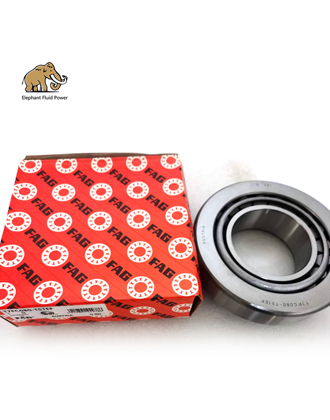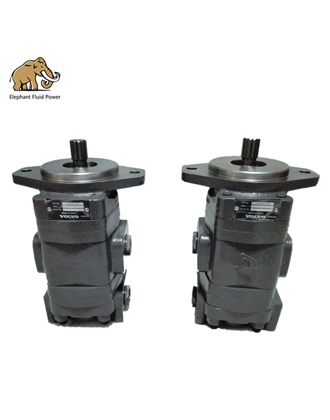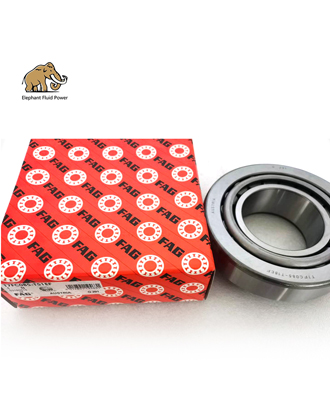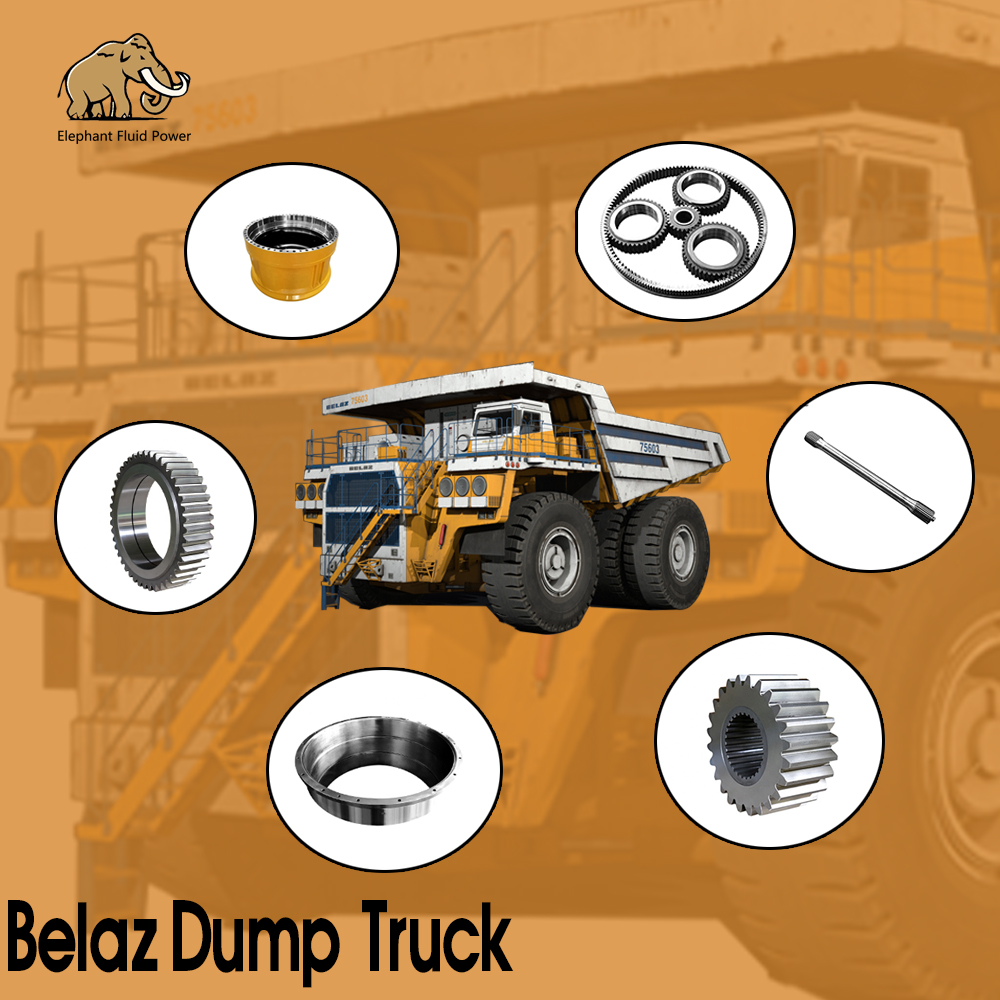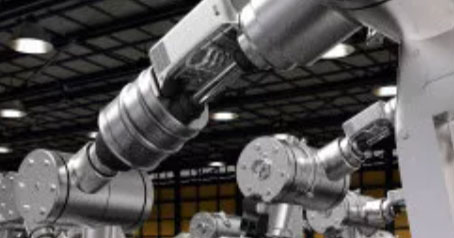Hydraulic piston pumps are fundamental components of hydraulic systems, delivering the force and power necessary for various industrial applications. The assembly process of hydraulic piston pumps is a meticulous and precise endeavor that ensures optimal performance and reliability. In this blog, we will delve into the world of hydraulic piston pump assembly, understanding its components, the assembly process, and the importance of precision in achieving efficient hydraulic systems.
Components of Hydraulic Piston Pump Assembly
A hydraulic piston pump assembly comprises several critical components that work together to generate hydraulic power. The piston and cylinder block form the heart of the hydraulic piston pump assembly. As the piston moves within the cylinder block, it creates pressure variations that lead to fluid displacement and the generation of hydraulic power. The swashplate mechanism is responsible for converting the rotational motion of the pump's drive shaft into linear motion of the piston. This conversion is crucial for the pump's operation and efficiency. The valve plate controls the flow of hydraulic fluid into and out of the pump's cylinders. It plays a critical role in maintaining the proper timing and synchronization of the piston movement. The port plate directs the flow of hydraulic fluid to and from the pump's cylinders. It contains various ports and channels that ensure the smooth and controlled movement of fluid within the pump. The pump's shaft connects to the drive source and transmits the rotational motion to the swashplate. Bearings support the shaft's rotation, reducing friction and ensuring smooth operation.
The Hydraulic Piston Pump Assembly Process
Before assembly begins, each component is thoroughly inspected for defects, damage, or irregularities. Any flawed components are replaced to ensure the final product's quality. The cylinder block is carefully machined to precise tolerances. The piston bores are honed to ensure a smooth surface for piston movement and to maintain tight seals. The swashplate is installed onto the drive shaft. Its angle determines the stroke length of the piston, affecting the pump's displacement volume and output. Pistons are fitted into their respective bores in the cylinder block. Proper alignment and clearances are crucial to prevent friction and ensure efficient fluid displacement. The valve and port plates are carefully positioned to align with the pistons and cylinder block. These plates are secured in place using precise torque settings to prevent leaks and ensure proper fluid flow. Seals and gaskets are placed strategically to prevent fluid leakage between components. Proper sealing is critical to maintaining pressure and preventing contamination.
The Importance of Precision in Hydraulic Piston Pump Assembly
Precise assembly ensures that the pump operates at its peak performance, delivering the intended pressure and flow rates. Any misalignment or irregularities can lead to reduced efficiency. Properly assembled hydraulic piston pumps are more likely to have an extended lifespan. Precision assembly minimizes wear and tear on components, reducing the risk of premature failures. Efficient hydraulic systems contribute to energy savings. A well-assembled hydraulic piston pump minimizes energy losses and maximizes power transfer, leading to more energy-efficient operations. Correct assembly prevents fluid leakage, which can lead to system inefficiencies, reduced performance, and contamination of the hydraulic fluid. Precision assembly ensures that the hydraulic piston pump operates as intended, reducing the risk of malfunctions that could compromise the safety of workers and equipment.
The intricate process of hydraulic piston pump assembly is a testament to the precision required to create efficient, reliable, and high-performing hydraulic systems. Each component's careful placement, proper alignment, and meticulous attention to detail contribute to the pump's ability to generate hydraulic power effectively. Precision assembly is not just a technical requirement; it's the foundation upon which industries rely to achieve optimal performance and productivity. Whether in manufacturing, construction, or any other sector, the role of hydraulic piston pump assembly is integral to the success of hydraulic systems that power modern industries.
 French
French
 Portuguese
Portuguese
 Russian
Russian
 German
German
 Spanish
Spanish
 Japanese
Japanese
 Korean
Korean
 Irish
Irish
 Greek
Greek
 Turkish
Turkish
 Italian
Italian
 Danish
Danish
 Romanian
Romanian
 Indonesian
Indonesian
 Czech
Czech
 Afrikaans
Afrikaans
 Swedish
Swedish
 Polish
Polish
 Basque
Basque
 Catalan
Catalan
 Esperanto
Esperanto
 Hindi
Hindi
 Lao
Lao
 Albanian
Albanian
 Amharic
Amharic
 Armenian
Armenian
 Azerbaijani
Azerbaijani
 Belarusian
Belarusian
 Bengali
Bengali
 Bosnian
Bosnian
 Bulgarian
Bulgarian
 Cebuano
Cebuano
 Chichewa
Chichewa
 Corsican
Corsican
 Croatian
Croatian
 Dutch
Dutch
 Estonian
Estonian
 Filipino
Filipino
 Finnish
Finnish
 Frisian
Frisian
 Galician
Galician
 Georgian
Georgian
 Gujarati
Gujarati
 Haitian
Haitian
 Hausa
Hausa
 Hawaiian
Hawaiian
 Hebrew
Hebrew
 Hmong
Hmong
 Hungarian
Hungarian
 Icelandic
Icelandic
 Igbo
Igbo
 Javanese
Javanese
 Kannada
Kannada
 Kazakh
Kazakh
 Khmer
Khmer
 Kurdish
Kurdish
 Kyrgyz
Kyrgyz
 Latin
Latin
 Latvian
Latvian
 Lithuanian
Lithuanian
 Luxembourg
Luxembourg
 Macedoniar
Macedoniar
 Malagasy
Malagasy
 Malay
Malay
 Malayalam
Malayalam
 Maltese
Maltese
 Maori
Maori
 Marathi
Marathi
 Mongolian
Mongolian
 Burmese
Burmese
 Nepali
Nepali
 Norwegian
Norwegian
 Pashto
Pashto
 Persian
Persian
 Punjabi
Punjabi
 Serbian
Serbian
 Sesotho
Sesotho
 Sinhala
Sinhala
 Slovak
Slovak
 Slovenian
Slovenian
 Somali
Somali
 Samoan
Samoan
 Scots Gaelic
Scots Gaelic
 Shona
Shona
 Sindhi
Sindhi
 Sundanese
Sundanese
 Swahili
Swahili
 Tajik
Tajik
 Tamil
Tamil
 Telugu
Telugu
 Thai
Thai
 Ukrainian
Ukrainian
 Urdu
Urdu
 Uzbek
Uzbek
 Vietnamese
Vietnamese
 Welsh
Welsh
 Xhosa
Xhosa
 Yiddish
Yiddish
 Yoruba
Yoruba
 Zulu
Zulu

